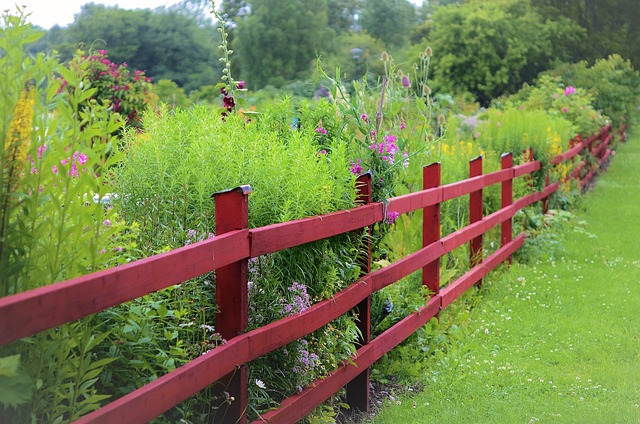For New Bedford, Massachusetts homeowners looking to enhance their outdoor spaces, installing a fence offers both privacy and property value. This DIY guide breaks down the process into manageable steps, from planning your fence’s design and measuring your yard, to gathering essential tools and materials. We’ll walk you through digging post holes, erecting posts, attaching panels, and finishing touches, ensuring a strong and aesthetically pleasing barrier tailored to your unique space.
- Planning Your Fence: Measure and Design
- Gathering Materials and Tools
- Digging and Installing Posts
- Attaching Panels and Final Touches
Planning Your Fence: Measure and Design
Before beginning your DIY fence installation project, careful planning is key. Start by measuring the perimeter of the area where you want to install the fence. This will give you a clear understanding of the length and height requirements for your fence. Use string and stakes to outline the desired path, ensuring it aligns with local building codes and regulations. Consider the style and design that best suit your property’s aesthetics and functional needs. Whether you prefer a traditional wooden fence or a modern vinyl option, accurate measurements will help you procure the right materials and ensure a seamless fit.
Once you’ve decided on the type and layout of your fence, create a detailed design. Sketch out the dimensions and angles, marking any gates or posts that are necessary. This step is crucial for ensuring your fence not only looks good but also functions properly, providing privacy and security as intended.
Gathering Materials and Tools
Before starting your DIY fence installation project, it’s crucial to gather all necessary materials and tools. This includes posts, rails, brackets, fasteners, concrete (for setting posts), a drill or screwdriver, a measuring tape, a level, string, and safety gear like gloves and eye protection. Make sure you choose materials suitable for your local climate and fencing style. For instance, in New Bedford, Massachusetts, salt-resistant options are preferable due to the coastal environment.
Organize your workspace efficiently, keeping tools and materials within reach. Lay out posts, rails, and brackets according to your design plans, ensuring all pieces fit together seamlessly. Double-check measurements to avoid any last-minute adjustments that could disrupt your installation schedule. Have a helper if possible—they can hold materials in place while you work, making the process smoother and safer.
Digging and Installing Posts
When installing fence posts in New Bedford, homeowners should start by marking out the desired fence line with string and stakes. Once the layout is complete, it’s time to dig holes for the posts. Use a post-hole digger or an electric drill with a hole-digging attachment to create openings that are deep enough—typically around 3 feet—to ensure stability against shifting soil conditions. The holes should be wide enough to accommodate the diameter of the fence posts.
After digging, place a level in the bottom of each hole to ensure it’s perfectly horizontal. This step is crucial for aligning your fence properly. Insert concrete into the holes, allowing it to set and cure completely. During this process, keep the posts upright with assistance from a helper or by using wooden braces. Once the concrete has cured, you can proceed with attaching vertical support rails and ultimately installing the fence panels.
Attaching Panels and Final Touches
Once all the panels are securely attached to the posts, it’s time to complete the look with final touches. Start by checking the alignment and spacing of each panel, ensuring they run straight and parallel. Make any necessary adjustments using a level. Next, add the top rail, securing it to the tops of the posts and panels with brackets or nails, depending on your chosen method. This step not only reinforces the fence but also provides a finished edge. Finally, take a step back to admire your work and ensure all hardware is tight and secure.
